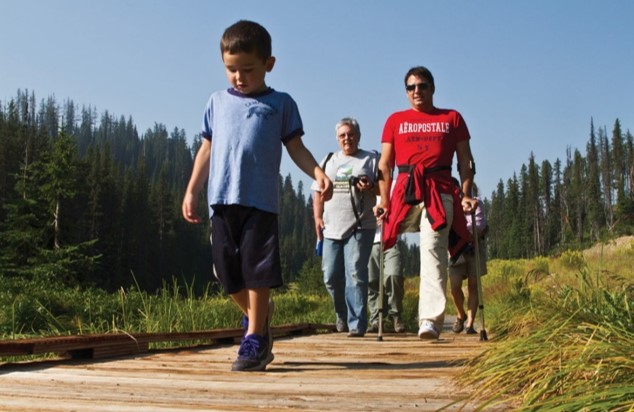 |
From whitewater rapids and mountain summits, to leisurely hikes and relaxing campsites—national forests and grasslands have something to offer for visitors of every ability. To find an accessible site:
|
Finding an accessible campsite |
|
 |
There are more than 193 million miles of forests and grasslands to explore and experience. Across those vast spaces are thousands of recreation opportunities. One of the most popular pastimes on forests and grasslands is camping. Many Forest Service campsites are accessible to visitors of any ability. Learn more here at our Interactive Visitor Map |
Short hikes that are more accessible |
|
 |
There are more than 4,500 miles of trails on national Forests that comply with Trails Accessibility Standards. While some of these trails are paved, what qualifies under these standards is far broader. Most have firm, stable surfaces, but are not paved. Some have short runs of steeper grades, but level out for resting. Trail width is also generally 36 inches wide. Learn more about short hikes or contact a forest near you. |
Free Lifetime Pass |
|
 |
Those with permanent disabilities are eligible for a free, lifetime pass to these Recreational Lands. A Federal Recreational Lands Pass covers entrance fees to more then 2,000 sites—including national forests and grasslands. Learn more about requirements for this pass and how to apply for one. |
What does “accessible” mean? |
|
 |
In legal terms, an accessible facility complies with the applicable accessibility guidelines and standards when that facility was built or altered. There are different standards and guidelines for facilities built on National Forest System lands. |

